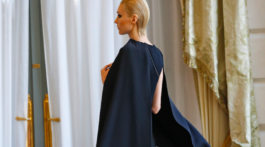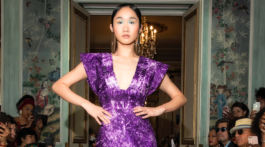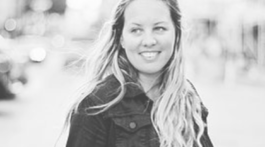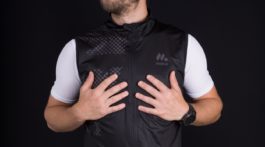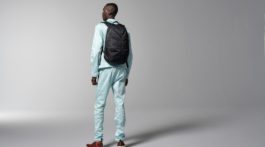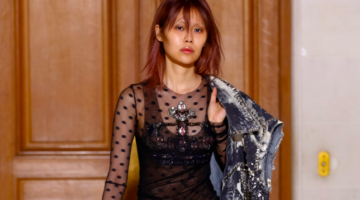Veruschka is the one multi-syllable name by which one of the world’s first supermodels became known. A predecessor of Linda Evangelista, she is the original $10,000-a-day girl. Mysterious, beautiful, aristocratic, introverted and elegant, she was a true supermodel. The legend, like the real life woman still remains an enigma.
Veruschka was born, the Countess Vera Gottliebe Anna von Lehndorff on May 14, 1939 in her family’s chateau in Königsberg, East Prussia (Germany). The home had 100 rooms and had been in her family for centuries along with the surrounding grounds of their estate. Today, it is part of the Russian enclave of Kaliningrad.
In 1944, Veruschka’s father, the Count Heinrich von Lehndorff-Steinort, was hanged for his involvement in July 1944 plot to assassinate the Fuhrer, Adolf Hitler. The Count was executed in Berlin, and the family chateau was fully confiscated and used as the headquarters of the Nazi’s Wehrmacht. The count had become a key member of the German resistance after witnessing atrocities committed against Jewish children such as beatings and killings. When the Gestapo came to arrest him, the Count did indeed escape, but came back to give himself up upon seeing Vera’s mother arrested with machine guns pointed to her head. He then escaped again to the forest from the armoured car that was transporting him to Berlin, only to give himself up once more to protect his family. He was executed in Berlin on July 20, 1944 in a makeshift hanging during which he was suspended from a meat hook and painfully strangled to death with a wire around his neck.
Little Vera at the time was only three years old. She and her sisters spent the remaining five months of World War II in Gestapo camps. After Nazi Germany’s defeat at the hands of the Allies, the girls were reunited with their mother only to return “home” financially destitute and homeless. To top it all off, the family often found themselves subjected to ostracism by other Germans because of their father’s “treachery”. Vera attended 13 schools during this time. Still in shock from her family’s tragedy, she would spend time alone hiding among the trees in woods. For Vera, she was escaping the world by vanishing into nothingness. This desire and these actions or rather reactions to her painful past would mark her. Her expressing of it would define her work in the near years to come and for the rest of her life.
By 14, young Vera stood an astounding 1m85. She was mocked by children and made to fell that she was ugly, and a freak. However, she found solace and an escape in art. She left home to study art in Hamburg, Germany. Later around the age of 16, she went to Florence, Italy where she studied textile design. It was during that time that someone first realized her potential to be a model. She was asked by a local fashion designer to model some of his creations, and she accepted.
In 1961 and at the age of 17, young Vera had indeed blossomed into a beautiful young woman. She worked with the photographer Ugo Mulas, who “discovered” her. At this time in fashion’s history, models were not as tall as they are today. Paris, for example, did not take to her so well during that time. After meeting Eileen Ford of the famed Ford Models, she decided to go to New York because Americans liked their models to be statuesque. Once there, nothing happened. Eileen Ford did not even recall having met her. She returned to Italy and to Munich’s countryside for a short time. She then returned to Manhattan determined to make it as a model. This time, she would return to New York as Veruschka!
As Veruschka, Vera had invented a fictitious and mysterious past for herself. She went out on her go-and-sees to meet the photographers and would tell everyone, “I am Veruschka who comes from the border between Russia, Germany and Poland. I’d like to see what you can do with my face”. From that moment on, no one would ever have troubles remembering the girl named Veruschka.
Diana Vreeland, the editor-in-chief of American Vogue immediately fell in love with Veruschka upon seeing her for the first time in 1964. Vreeland even pinned her photographed to her wall and exclaimed to her, “Veruschka, you’re going to hear from me”.
Not long after hiring the Prussian countess for Vogue, Vreeland began encouraging Veruschka to bring to the table her own ideas about the photo shoots, the themes and their art direction. Here, Veruschka would begin working on her own legend and mythical status. After a few shoots, Vreeland encouraged her to come up with her own ideas. Veruschka travelled to Japan’s snow country where she was photographed wearing a lynx coat while standing next to a sumo wrestler. She involved herself in nearly every aspect of the shoots from then on, even doing her own makeup and acting as stylist for the shoots.
In 1966 she did her first shoot wearing only body paint. From then on, Vreeland gave her carte blanche to conceive and create her fashion stories. She was inspired greatly and found a professional and romantic match for her work in the person of the Italian photographer, Franco Rubartelli. They would fly the four corners of the world together only taking with them all the clothes, body paint and equipment required for their shots. Veruschka would be the principle actor in the spreads with her gorgeous body contorted into geometric forms. These events helped push Vera further into her lifelong pursuit of artistic dissipation.
On one trip to Kenya, she teamed with Salvador Dali and photographer Peter Beard. In her artistic quest to be “native” in the shoot, she painted her body with black shoe polish in order to resemble surreal plants and animal life. She later said of her work in those days, “The most successful ones were done like that, because I was in charge of it. Wth the photographer we created the whole thing on the spot. We cut up the clothes even, if it looked better.”
Nineteen Sixty-Six also saw Veruschka make her film debut in the film, Blow Up. Although she was on the screen but for five minutes, she emerged from it internationally famous. She appeared in the film as herself with a photographer-character named David Hemmings (based on the fashion photographer David Bailey). The scenes starts out in a normal manner but ends ups something much more. And although the two in the film remained clothed, Premiere magazine chose it as the sexiest scene in film history. The film received the 1967 Palme d’Or at the Cannes Film Festival.
An overnight sensation, Veruschka had arrived and in big style. She was said to have been born from the plumier of a graphic artist than from the brush of a painter. Life magazine called her “the most sought after model in the world” and Vogue labelled her as “One of the Wonders of the World”.
Fascinated by her, the top fashion photographers literally lined up to photograph her: Richard Avedon, Peter Lindbergh, Helmut Newton, Irving Penn, David Bailey. The men of Hollywood lined up to date her too: Dustin Hoffman, Al Pacino, Peter Fonda, Jack Nicholson and Warren Beatty.
She landed the cover of Vogue 11 times. But by 1974, Veruschka found herself in a downward spiral of deep and heavy depression, which led her further away from the fashion industry. She sought psychiatric help which opened up the painful and unhealed scars of her childhood. She headed back to Germany to spend time with her mother. While there, she wrote in her dairy and photographed herself daily. She also went deeper into her body painting. Rumours ran amuck about her during this time. One stated that she had lost her face or that it had been gravely damaged as the result of a car crash, which she denied. And in 1975, Veruschka walked away from the fashion business following a dispute with Grace Mirabella, who had replaced Diana Vreeland at Vogue. Mirabella was all too glad to see her go because she felt that Vogue was giving Veruschka too much exposure, to much influence and too much power in the magazine’s pages. Mirabella reportedly wanted the supermodel’s work to relate more to the average female reader. Her way of achieving that was to have Veruschka cut her hair.
Long before Linda Evangelista and the greatest supermodels of the late 1980’s and early 1990’s, Veruschka was already earning as much as $10,000 a day at the epogy of her modelling career.
By 1985, Veruschka had fully turned her attention towards her art work. With the help of a former lover – the photographer Hoger Turlzsch – Veruschka staged a body-painting show in Tribeca, New York. It revisited her time as formerly the world’s highest paid model. Outfits were painted onto her nude body, and she found herself once more devolved into savage animals, dirty old men, gangsters, dandies and film stars. This helped to established her as a pioneer in the matter of body painting.
Over the years, Veruscka has returned to the fashion world for brief moments. In 1995, Karl Lagerfeld used her to launch his men’s wear collection. In 2000, she traveled to Australia as a guest model at the Melbourne Fashion Festival. In 2003, she accepted to work with the American designer, Michael Kors. He wanted to infused her spirit into his 2003 collection for the French fashion house Céline.
In retrospect Veruschka’s career had not much to do with clothes as it did her passion. She understood this too. For a better overall understanding of it and more importantly of her own attitude towards it, one need only turn to a 1968 interview with the magazine Nova. In it she declared, “I hate the whole kind of chic look – Dior, St Laurent. They might look very nice, but I don’t feel them.” More than 20 years later, she complimented that statement in an interview with Naomi West in which she said, “I’m not especially inspired by fashion… I was always being different types of women. I copied Ursula Andress, Brigitte Bardot, Greta Garbo. Then I got bored so I painted myself as an animal. One day I ended up as a stone. I was depressed and went out on to my terrace in Rome. I wanted to disappear, to be like the stones of the terrace. I painted myself lying down in the mirror, and copied the stones on to my face.”
Since her arrival in the fashion business, Veruschka has never stopped fascinating, mesmerizing or beguiling those come across pictures of her from her reign as a supermodel. In 1992, the British pop group, Suede, used a nude picture of Veruschka for the cover of their single, “The Drowners”. Numerous boutiques still baptise themselves with her name. Makeup brand MAC sells a lipstick bearing her name. As a sign of the impact of her career, Veruschka was ranked N°#23 on Channel 5’s list of the “World’s Greatest Supermodel”.
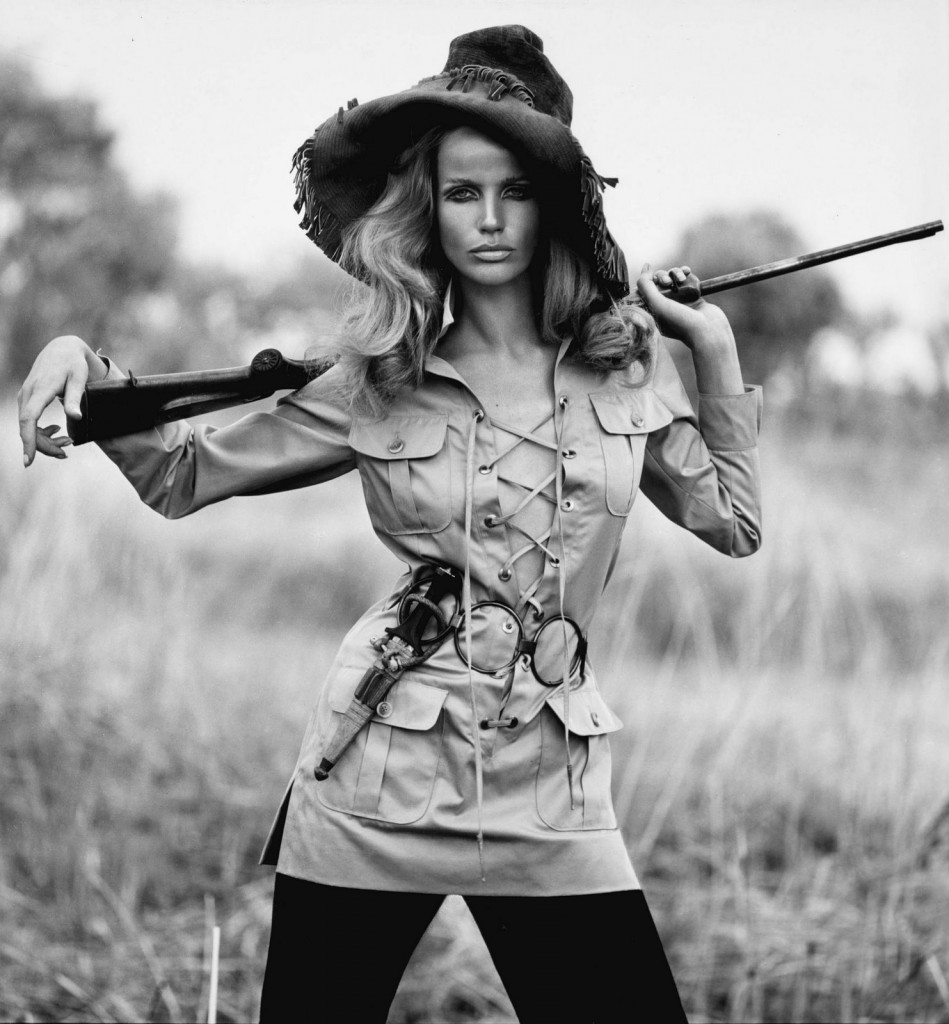
VERUSCHKA
6′ (1.83 m); Measurements: 34-22-34 1/2 (Source: Celebrity Sleuth magazine)
Filmography
1. Orchestre rouge, L’ (1989)
2. The Bride (1985/I) (as Veruschka) …. Countess
3. Vom Zusehen beim Sterben (1985)
4. Dorian Gray im Spiegel der Boulevardpresse (1984)
5. Bizarre Styles (1981) (as Veruschka)
6. Milo-Milo (1979)
7. Couleur chair (1979)
8. Cattivi pensieri (1976)
9. Salomé (1972)
10. Veruschka (1971)
11. Blowup (1966))
12. Veruschka (1971)
13. Fame, Fashion and Photography: The Real Blow Up (2002) (TV)
14. Rom aktuell (1970) TV
